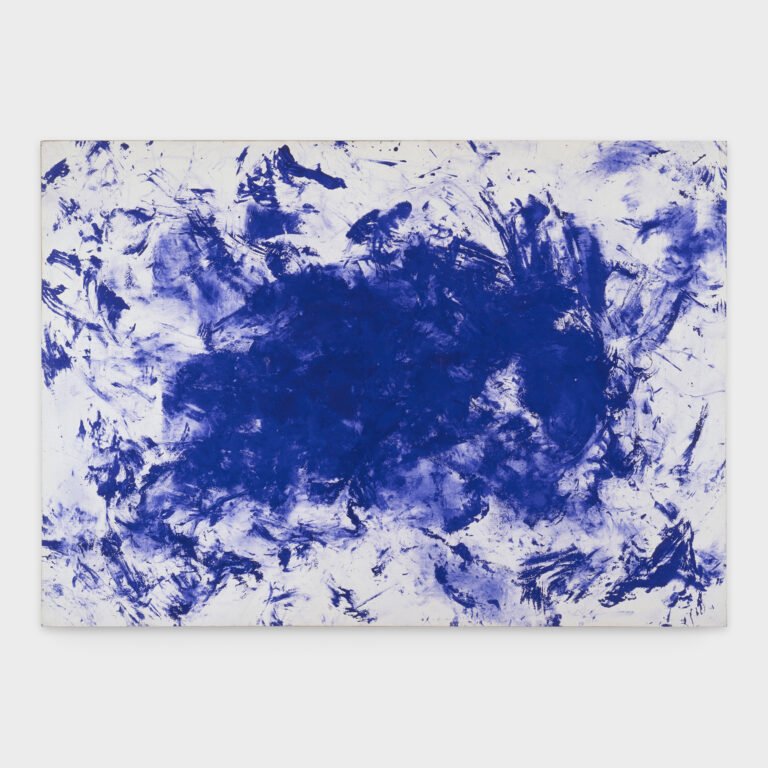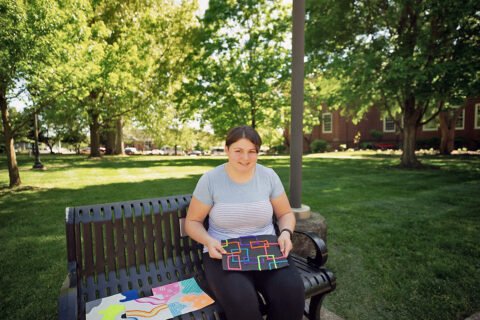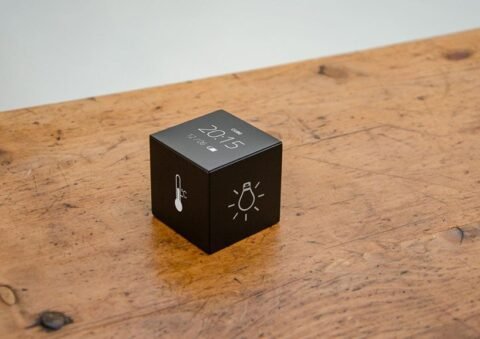On View
Lévy Gorvy Dayan
April 11–May 25, 2024
New York
“And so I fell in love with a color—in this case, the color blue—as if falling under a spell, a spell I fought to stay under and get out from under, in turns.” So poet Maggie Nelson begins her meditative 2009 treatise, Bluets, a long ode to the color blue. It’s a sentiment with which artist Yves Klein (1928–1962) almost certainly would have been in sympathy. With a reputation as a titan of post-war art, it’s easy to forget what a renegade Klein was in his brief lifetime. Yves Klein and the Tangible World at Lévy Gorvy Dayan brings together a sumptuous array of Klein’s paintings, performances, films, and ephemera in a powerhouse exhibition that elucidates Klein’s beautiful, singular mind, one that he seems to have fully committed to making art, for art’s sake.
Klein’s towering painting, Anthropométrie sans titre (1960) looms over visitors upon entry. At over 13 feet tall, the canvas features bodily imprints pressed into the canvas in Klein’s signature blue. In poses that seem beyond mortal, it is as if the models Klein used as paintbrushes had shed their bodies and marked the canvas with their fluttering souls. Combined with the foliage negatively pressed into the paint, and additional, gold-leafed figures, Anthropométrie sans titre doesn’t encase sentience as relics on the surface so much as it transfers sentience to nonliving materials, a feat of magic. In the soaring blue forms one recalls Klein’s own, similar posture in his legendary photomontage Leap Into the Void (1960), a copy of which is on view among a selection of photos, writings, and other ephemera.
Anthropométrie sans titre heralds much of the work to come deeper inside the gallery, where Klein’s iconic blue prevails in works installed throughout the first floor. International Klein Blue (IKB), a unique hue Klein developed with a Parisian paint supplier in the late 1950s, draws a rare acidity from the ordinarily soft color through an especially heavy reliance on ultramarine. This hyper-blue, an expansive desert of it, is poured across a section of floor, flush to Lévy Gorvy Dayan’s grand central staircase, in a recreated installation called Pigment pur bleu (1957/2024). One feels a singe of the eye as it alights on Pigment pur bleu, a feeling which Nelson also attested to in a passage of Bluets devoted to Klein. “Feeling … blue radiate out so hotly that it seemed to be touching, perhaps even hurting, my eyeballs, I wrote but one phrase in my notebook: too much.”
The application of IKB to canvas using the bodies of live, female models as paintbrushes resulted in some of the most recognizable iconography of the twentieth century. Another work from 1960, also titled Anthropométrie sans titre features a singular, elegant swoosh across the large canvas, the mark of a woman’s body as if she were a ballet dancer captured a cambré. In a contemporaneous documentary film that plays on one wall of the gallery, it’s possible to see Klein and his models creating this painting, and others in the show. The film is a fascinating chronicle of Klein’s process, and makes clear his collaborative spirit and respectful relationship with his models, who are seen smearing themselves with paint as they discuss with the artist their eventual positionings upon his surfaces.
Evidence of Klein’s proclivity to work in symbiotic partnerships—with models, photographers, paint makers, and even firemen—is on full display. A number of “Fire Paintings” from 1961–62 also hang in the show. Documented in another looping film, Klein made the works with a blowtorch, lighting canvases on fire that afterwards were immediately doused by a fireman. Nude models then pressed their bodies, sloshed with water, to these charred surfaces, leaving behind ashy shadow selves that seem to emanate from flame. In Peinture de feu sans titre (ca. 1961) the flame itself still seems embodied on the canvas, as if it were never quenched, as the model’s corporeal imprint emerges from the flare. From destruction of the surface such light emerges. Such phoenixes still rise from Klein’s work.




